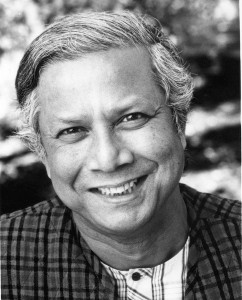Grameen Bank, which was founded by Muhammad Yunus, had humble beginnings. What was then a scheme to pull debt-ridden people with loans without interest, won Yunus the Nobel Peace Prize. But how did it become to a large, social venture ?
First of all, we need to differentiate what is charity and social venture/social entrepreneur. A charity works by giving out money. This is good, but it isn’t financially sustainable in the long run. There is so much amount of money that can be showered to people, whereas Social enterprises are entities/companies that help to solve problems such as poverty and healthcare, but possess a sustainable business model that is sound and long-term. This is what Grameen Bank has done. It has become a problem solver for debt ridden people in Bangladesh and it has done so in a sustainable manner. This helps the bank to operate on a day-to-day basis.
A part of how the bank can sustain in the long run is the amount of loans it gives to people and the rate of return. The bank gives small amounts of loans along the course of the year, rather than one big amount of money which can be wasted on a single blow. The plus of doing this is that the lendee can plan their spending or their investments so that they can pay back the bank in the allotted time frame.
By giving loans to these people, the bank has given people capital to start their own businesses and make their own money, so that they can provide for themselves and their families, and in turn, rise out of poverty.
A quote summarizes my blog post today,
“Give man a fish, then he can eat for a day. Teach a man to fish, then he will never be hungry ever again”
